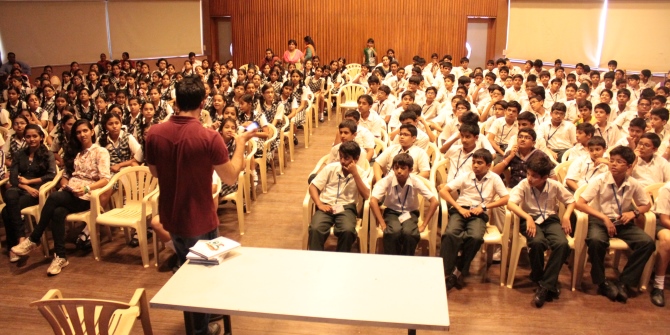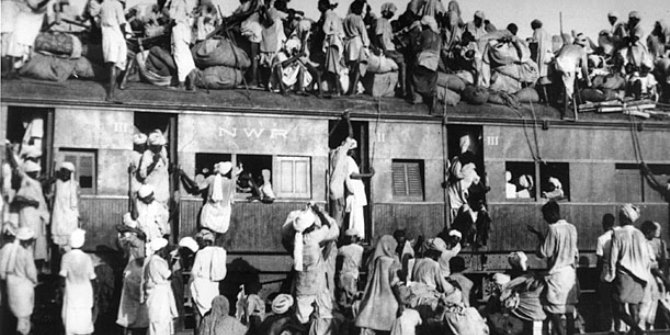Signed just under sixty-years ago, between India and Pakistan the Indus Water Treaty, has successfully regulated one of the longest rivers in the world that passes through several state boundaries. In this book on the history of the Treaty, Gayathri D Naik (SOAS) finds a piece of scholarship that lucidly explains the history behind the successful governance of this precious, life-supporting river.
Indus Water Treaty. Political and Legal Dimensions. Ijaz Hussain. OUP. 2017
The Indus River is one of the longest rivers in the world. Beginning in the foothills of the Himalayas, it flows through Jammu & Kashmir in India and through the entirety of Pakistan, until it meets the Arabian Sea. Nearly sixty years ago, the Indus Water Treaty that regulates the rights and obligations of India and Pakistan on sharing of Indus Water was signed. One of the most successful water treaties in the world, it takes centre in this extremely interesting and relevant book.
The Indus River System, formed by Indus and its five tributaries – Jhelum, Chenab, Beas, Ravi and Sutlej – constitute the largest contiguous irrigation system in the world. Indus, the main river of the Indus Basin, is called Sindhu in Sanskrit, meaning divider, keeper or defender. The Indus plain covers nearly 518,000 sq. km of area from Himalayas to Arabian Sea. Additionally, the Indus river system waters 25 per cent of alluvial lands in Pakistan and 9.8 percent in India. Signed under the mediation of the World Bank in 1960, the Treaty notably didn’t include the other two nations that are linked to the river: China and Afghanistan.

The history of the Indus Water Dispute is as old as partition of India. The British had built an elaborate irrigation canal system on the Indus rivers in Punjab. In 1947 during partition, the main parts of this canal system were granted to India by the Boundary Commission headed by Radcliffe, which sowed the seeds of crisis later when India stopped the supply of water to Pakistan in 1948.
Dr. Ijaz highlights that while demarcating boundaries of Punjab, the boundary commission disregarded the communal principle of dividing Muslim and Non-Muslim areas and decided the matter based on maintenance of integrity of the canal system. Radcliffe was the catalyst for India’s assertion of control over Eastern Rivers, which in effect gave rise to water dispute between the two countries.
Approaches towards the nature of the dispute and its settlement were different for both countries. Since the signing of the joint statement of May 1948 by the two governments, and the subsequent deadlock, which lead to India cutting off the waters of Western Rivers to Pakistan in 1948, different interpretations on what led to the dispute exist. While India considered the Joint Statement as a permanent agreement, Pakistan was reluctant to accept the same, leading to several bilateral exchanges and at last the involvement of the World Bank. Pakistan considered the nature of the dispute to be legal and pressured for the involvement of International Court of Justice but for India who considered it as only of political nature, third party involvement was not acceptable.
The treaty in reality is a technical agreement made by engineers: short, with just twelve articles and a small preamble, the document’s details are elaborated on with eight annexures and four appendices, allocating three western rivers to Pakistan and three eastern rivers to India. The treaty provides safeguards for both parties and provides that no party could materially change the flow of the water in any channel to the detriment of the other party.
The book provides a detailed, lucid explanation of these facts and highlights that while it provides for the prevention of undue pollution of the waters and for parties to take reasonable measures to ensure the safe treatment of sewage fluids before entering the river, it neither defines undue pollution nor addresses transboundary environmental harm or assessment.
The book is divided into eight chapters and begins with a vivid description of the Indus Basin system and the origin of the dispute. It examines the role of the World Bank as negotiator and moves on to examine provisions of the treaty and its implementation since it came into effect.
The book fails however to address certain questions surrounding the Treaty. One wonders when thinking back nearly sixty years, why did India accept help from the World Bank? And why did this financial institution extend its hands in the only mediation process? Also, how and why did Pakistan accept its help? Dr Ijaz notes that it was an article by David E Lilienthal published in the Collier’s magazine where he proposed for an integral development of Indus Water Basin formed the ground for World Bank involvement. According to the author, reasons for India and Pakistan accepting good offices of the World Bank are deeply political. He also asserts the Bank forced Pakistan to accept the treaty.
A significant feature of this successful treaty is the constitution of the Permanent Indus Commission. This highly successful Commission encourages the parties to share information of the river and any plans for construction along it. The Commission has a unique dispute settlement process that categorises issues into questions, differences and disputes. Despite the successful implementation of the Treaty, it is not free of controversies. There have been five disputes which the parties have solved until now, of which the author discusses the legal and political arguments in detail from both parties’ perspectives in detail.
When the Treaty was signed in 1960, climate change was absent from international environmental law principles. The question of how climate change (assuming it is effecting the Indus River; a fact the author deals with clearly) is effecting the river makes this book stand-out from other academic works of literature of the same topic, and provides a extremely useful contribution to the study of climate change in South Asia and along the Indus Basin.
Looking forward, renunciation or amendments of the Treaty could be made but only under the provisions mentioned in the Treaty.. Dr Ijaz discusses two schools of thought that argue for amendments of of Treaty and replacements with a new treaty. He examines the conditions of the repudiation of the Treaty and controversies surrounding its implementation by analysing other water treaties entered into by India with her other neighbours.
Despite its controversies, the Treaty has been successful in preventing war between its signatures and ensuring adequate water for agriculture and power in Pakistan. However, there have been instances when India threatened to repudiate it – when the Parliament of India was attacked and recently when military bases in Punjab were attacked.
Well researched, balanced and concise Dr Ijaz’s book provides a valuable perspective on Indus Water Treaty. Dr Ijaz in his book points to the gaps of research on the Treaty, an area of research he hopes to build on in the future. While the treaty has undoubtedly been a champion of peace between India and Pakistan, the treaty surely needs to be reexmained in light of the challenges from climate change. Whoever begins that process would do well to begin by reading Dr Ijaz’s book.
This article gives the views of the author, and not the position of the South Asia @ LSE blog, nor of the London School of Economics. Please read our comments policy before posting. Photo credit: Unsplash, kazuend
Gayathri D Naik is a Doctoral Candidate at School of Law, at SOAS, University of London. She holds BAL.LLB (Government Law College, Ernakulum), MPA (Indira Gandhi Open University) and LLM (South Asian University). She is also a Commonwealth Scholar. Her Doctoral Research looks into equity and groundwater issues in India.







